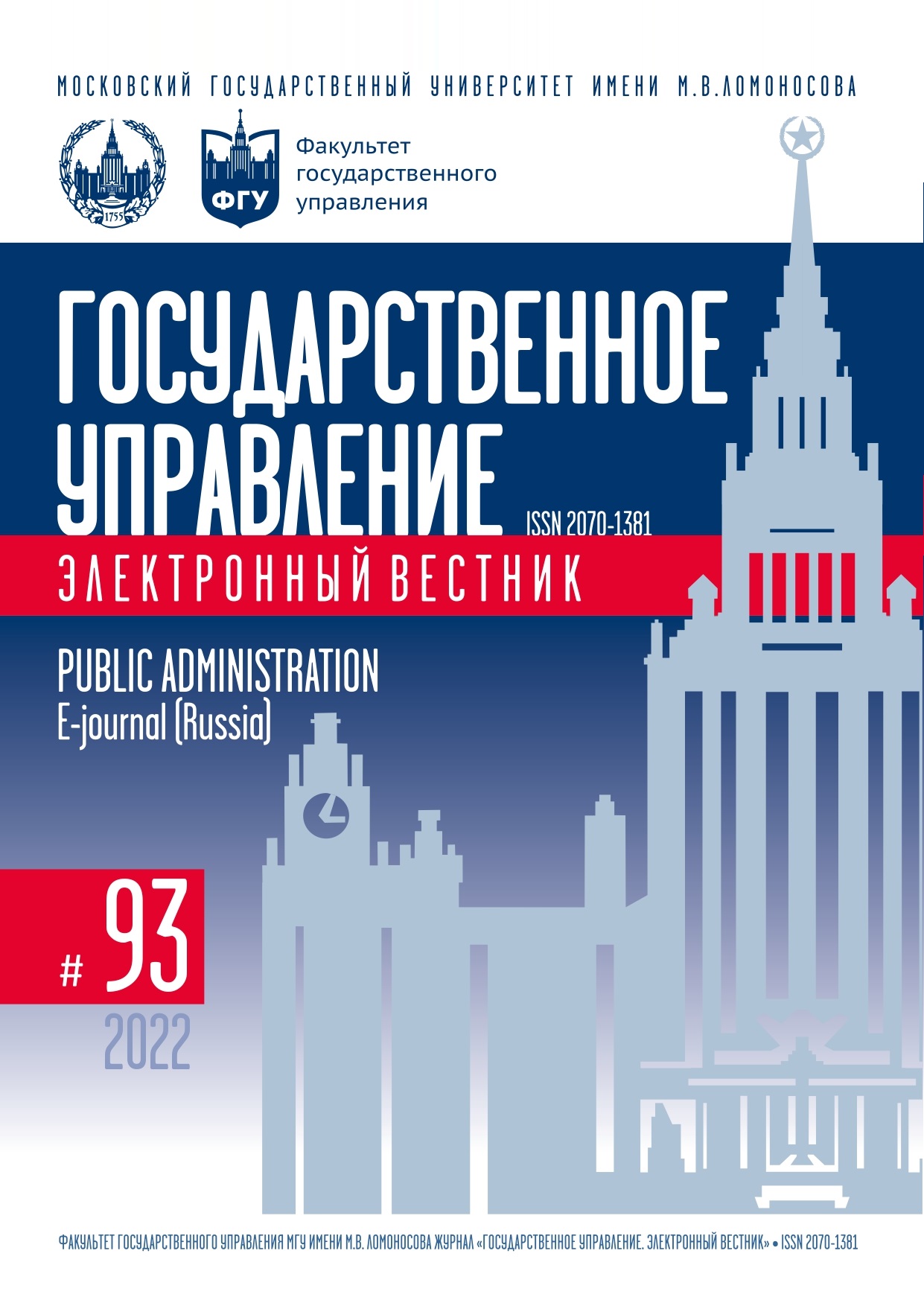Use Cases of Unified Biometric System as a Tool for Accessing Citizen’s Digital Profile
Keywords:
Biometrics, personal identification, identity verification, Unified Biometric System, citizen’s digital profileAbstract
Biometric identification systems are beginning to be used by the state and business when providing the services, as well as in the framework of implementing control processes and ensuring public and corporate security. This trend is typical both in Russia and abroad. The development and implementation in Russia of citizen’s digital profile of generate new risks of leakage, unauthorized access, and use of personal data. The Unified Biometric System being created in Russia is not only becoming a reliable means of protecting the data contained in citizen’s digital profile, but also allows expanding the options for their use by authorities, medical institutions, financial structures, and other organizations. As part of this study, the world experience of the use of biometrics, and the specifics of its use in Russia were considered. A survey of 186 Russian representatives of the Z generation to identify their understanding, perception and intentions to use biometric identification systems was carried out. Based on the results obtained, proposals were developed to expand the possibilities of using the Unified Biometric System within the framework of the services of citizen’s digital profile, and recommendations were formulated to consider the related concerns. This work may be useful for a deeper study of the options for using the Unified Biometric System in conjunction with citizen’s digital profile in the sphere of implementing government functions and services, as well as developing the measures to reduce the negative attitude of citizens to active use of such solutions in various life occasions.
References
Бутов А.В., Карякин А.М. Проблемы развития биометрии как основы цифровизации отечественной экономики и пути их решения // Известия высших учебных заведений. Серия: экономика, финансы и управление производством. 2020. № 1 (43). С. 48–52.
Дивольд Е.В. Предпосылки создания национальной системы биометрической идентификации личности // Научный вестник Омской академии МВД России. 2021. Т. 27. № 2 (81). С. 139–143. DOI: 10.24412/1999-625X-2021-2-139-143
Долганова О.И. Улучшение клиентского опыта взаимодействия с искусственным интеллектом путем соблюдения этических принципов // Бизнес-информатика. 2021. Т. 15. № 2. С. 34–46. DOI: 10.17323/2587-814X.2021.2.34.46
Кузьминых Е.С., Маслова М.А. Анализ и сравнение биометрических способов идентификации личности человека // Научный результат. Информационные технологии. 2021. Т. 6. № 4. С. 13–19. DOI: 10.18413/2518-1092-2021-6-4-0-2
Лапидус Л.В., Гостилович А.О., Омарова Ш.А. Особенности проникновения цифровых технологий в жизни поколения Z: ценности, поведенческие паттерны и потребительские привычки интернет-поколения // Государственное управление. Электронный вестник. 2020. № 83. С. 271–291. DOI: 10.24411/2070-1381-2020-10119
Castellano P.S., Ferrer X.D. Límites y garantías constitucionales frente a la identificación biométrica // IDP. Revista de Internet, Derecho y Política. 2022. № 35. P. 1–13. DOI: 10.7238/idp.v0i35.392324
de Rosa G.H., Roder M., Papa J.P. Neighbour-Based Bag-of-Samplings for Person Identification through Handwritten Dynamics and Convolutional Neural Networks // Expert Systems. 2022. Vol. 39. Is. 4. DOI: 10.1111/exsy.12891
Hoffmann M., Mariniello M. Biometric Technologies at Work: A Proposed Use-Based Taxonomy // Policy Contribution. 2021. Is. 23. URL: https://www.bruegel.org/sites/default/files/wp-content/uploads/2021/11/PC-23-171121-1.pdf
Joseph A., Lian A.N.H., Kipli K., Chin Kh.L., Mat D.A.A., Voon Ch.S.Ch., Ngie D.Ch.S., Song N.S. Person Verification Based on Multimodal Biometric Recognition // Pertanika Journal of Science & Technology. 2022. Vol. 30. Is. 1. P. 161–183. DOI: 10.47836/pjst.30.1.09
Kim J., Park N. De-Identification Mechanism of User Data in Video Systems According to Risk Level for Preventing Leakage of Personal Healthcare Information // Sensors. 2022. Vol. 22. Is. 7. DOI: 10.3390/s22072589
Liang Y., Samtani S., Guo B., Yu Z. Behavioral Biometrics for Continuous Authentication in the Internet-of-Things Era: An Artificial Intelligence Perspective // IEEE Internet of Things Journal. 2020. Vol. 7. Is. 9. P. 9128–9143. DOI: 10.1109/JIOT.2020.3004077
Safiullina L.K., Maturov R.R. Image Processing for Biometric Scanning of the Palm Vein Pattern // Society 5.0: Cyber-Social System as a Model of Narrative Management / ed. by A.G. Kravets, A.A. Bolshakov, M. Shcherbakov. Cham: Springer International Publishing, 2021. P. 25–34.
Tse K.-W., Hung K. Framework for User Behavioural Biometric Identification Using a Multimodal Scheme with Keystroke Trajectory Feature and Recurrent Neural Network on a Mobile Platform // IET Biometrics. 2022. Vol. 11. Is. 2. P. 157–170. DOI: 10.1049/bme2.12065

